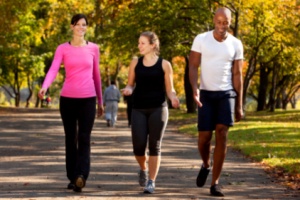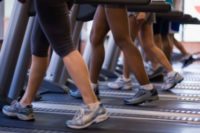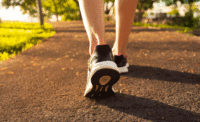 With obesity rates continuing to rise in the U.S. (they’ve doubled since 1980), health experts are urging Americans to be more physically active, and urging policy makers to help them do that.
With obesity rates continuing to rise in the U.S. (they’ve doubled since 1980), health experts are urging Americans to be more physically active, and urging policy makers to help them do that.
A new report from the CDC’s National Center for Chronic Disease Prevention and Health Promotion rates the progress on both those fronts, state by state.
Obesity isn’t the only health hazard that can be offset by exercise; people who are physically active generally live longer and have a lower risk for heart disease, stroke, type 2 diabetes, depression, and some cancers.
Policies count
According to the 2014 State Indicator on Physical Activity, environmental and policy strategies such as access to safe places for physical activity, physical education and physical activity in schools and child care settings, and street-scale and community-scale design policy can help increase physical activity behavior among all Americans. Overall, most states have environmental and policy strategies in place that encourage physical activity.
More than half of youth in the United States have access to parks or playground areas, recreation centers, boys’ and girls’ clubs, and walking paths or sidewalks in their neighborhoods.
The report also finds that 27 states have adopted policies that formalize their intent to plan, design and maintain streets so they are safe for all users including pedestrians, bicyclists, motorists, transit riders, and those in wheelchairs.
Highs and lows
Not surprisingly, physical activity among adults and high school students is higher in some states than others.
Alaska, Colorado and Washington D.C. are the only states or entities to have more than 25 percent of its residents meet the recommended aerobic and muscle strengthening guidelines.
Mississippi, Tennessee and West Virginia are the states with the smallest percentage of residents meeting the guidelines.
Implications for public health practice
The reports authors say that state health departments can work with governmental and non-governmental partners to create safe places for physical activity, to enhance physical education and physical activity in schools and child care settings, and to support street-scale and community-scale design policy. These partnerships will likely depend on the type of activities a state chooses to focus on. For example, some state departments of health, parks and recreation, and education may work together to help communities establish joint-use agreements that allow residents to use school physical activity facilities after school hours. To increase residents’ access to safe sidewalks, state departments of health, transportation, and community organization may work together to support street-scale design policies.
The report includes physical activity behavior, environment and policy information for each state and is available at:
www.cdc.gov/physicalactivity/downloads/pa_state_indicator_report_2014.pdf .



